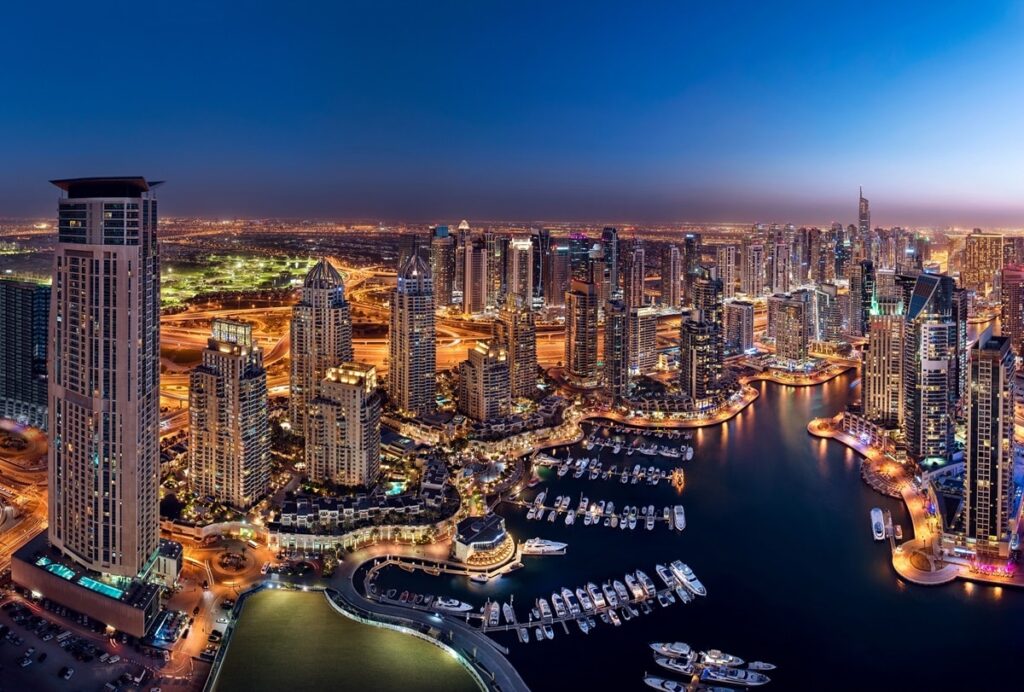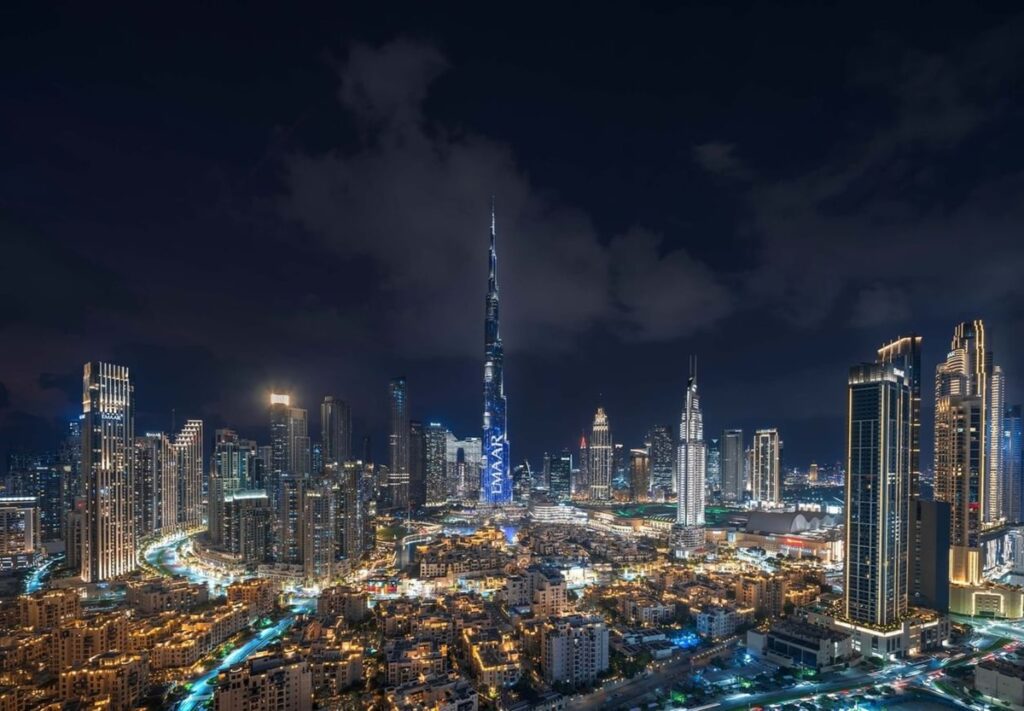Dubai continues its meteoric rise as a global tourism powerhouse, attracting a staggering 8.68 million international visitors in the first five months of 2025. With hotel room numbers soaring to over 153,000, the city isn’t just welcoming tourists—it’s setting new industry benchmarks and solidifying its position as a premier destination for global travellers.
A Record-Breaking Start to 2025
The year 2025 has opened with incredible momentum for Dubai’s tourism sector. The city welcomed nearly 8.7 million visitors between January and May—a seven percent jump from the same period last year. May alone brought in 1.53 million tourists, a number that would be impressive even for peak winter months.
These figures reflect more than just a temporary surge; they indicate a long-term, strategic rise in global appeal. Whether it’s leisure, business, shopping, or family holidays, Dubai is proving to be the go-to destination for millions around the world.

Hospitality Sector on Fire: 153,356 Rooms and Counting
As visitor numbers climb, so does the demand for accommodations. Dubai now offers a whopping 153,356 hotel rooms spread across 825 hotels, compared to 150,202 rooms a year ago. This rapid growth in hospitality infrastructure highlights both investor confidence and the city’s foresight in planning for rising tourism demand.
From opulent five-star resorts to budget-friendly options and unique boutique stays, Dubai’s lodging portfolio caters to every type of traveller. What’s more impressive is the level of service and innovation many of these establishments provide—from AI-powered check-ins to personalised in-room experiences.

High Occupancy and Rising Revenues
Dubai hotels aren’t just growing in number—they’re performing exceptionally well. The average hotel occupancy reached 83%, a healthy increase from last year’s 81%. This means most rooms are not just available, but booked—a sign of sustained and balanced demand.
Hotels recorded nearly 19.1 million occupied room nights in the first five months, up 4% year-on-year. The average guest stayed around 3.8 nights per visit, indicating both longer stays and greater engagement with the destination.
The average daily room rate rose to AED 620, while revenue per available room (RevPAR) climbed to AED 513—a solid 7% growth. This combination of higher occupancy, longer stays, and increased room rates signals a golden era for the city’s hospitality sector.
Who’s Visiting Dubai?
One of Dubai’s biggest strengths lies in its diverse tourist base. Visitors hail from every corner of the globe, creating a cultural melting pot that enriches both the guest experience and the city’s economy.
Western Europe leads the charge, accounting for 22% of total arrivals. The CIS region and Eastern Europe follow at 16%, with South Asia contributing 14%. Visitors from the Gulf Cooperation Council (GCC) countries make up 15%, while the Middle East and North Africa represent 11%.

The remaining percentage is a mix from the Americas, Africa, Australasia, and the Far East, showcasing Dubai’s truly international appeal. Whether for sun-soaked beach holidays, cultural exploration, business opportunities, or world-class shopping, Dubai offers something for everyone.
Strategic Planning Pays Off
Dubai’s remarkable performance in tourism isn’t just accidental. It’s the result of long-term strategic planning, aggressive marketing, and continuous investment in both infrastructure and experiences.
New attractions like cutting-edge theme parks, waterfront entertainment zones, and luxury shopping districts have helped maintain Dubai’s appeal to repeat and first-time visitors alike. Annual events such as the Dubai Shopping Festival and Global Village further amplify the city’s position as a must-visit destination.
Initiatives aimed at increasing visitor convenience—such as visa-on-arrival policies, smart immigration, and real-time public transit tracking—have also played a major role in improving the overall travel experience.
The Power of Connectivity
Dubai International Airport (DXB) continues to support this tourism boom by offering one of the most connected travel experiences on the planet. As the world’s busiest airport for international passengers, DXB plays a crucial role in ensuring smooth, fast, and frequent travel to and from the city.
Its ever-expanding network of airlines and destinations keeps Dubai within easy reach for over two-thirds of the global population, making it a convenient choice for quick getaways, long vacations, and even stopover experiences.
What Makes Dubai So Desirable?
Dubai’s magnetic pull is rooted in its unique blend of the traditional and the futuristic. Where else can you ride a camel through the desert in the morning and ski indoors by afternoon? Or have a dinner cruise in the old Creek while later enjoying rooftop views in a futuristic skyscraper?
The city’s commitment to offering world-class luxury alongside authentic cultural experiences makes it incredibly versatile. Whether you’re a budget traveller, a honeymooner, a solo backpacker, or a business executive, the city molds itself to your expectations—and often exceeds them.
Moreover, Dubai’s hospitality industry continues to innovate. Hotels are increasingly adopting sustainable practices, AI-driven guest services, and hyper-personalised amenities to cater to evolving consumer demands. The rise of wellness tourism, eco-tourism, and digital nomad communities has also been acknowledged and embraced in recent years.
Economic Impact and National Vision
Tourism contributes significantly to Dubai’s economy, accounting for a large portion of its GDP. It also supports hundreds of thousands of jobs, both directly and indirectly. From hotel staff to tour operators, from local artisans to international logistics providers, the ripple effect of a strong tourism sector is felt across various industries.
The leadership’s clear vision to position Dubai as one of the top three global cities for tourism, trade, and innovation continues to fuel infrastructure investments, job creation, and international partnerships.
With a goal of welcoming 40 million hotel guests annually by 2031 and growing tourism revenues to AED 450 billion, Dubai’s blueprint for sustainable tourism is ambitious yet achievable.
What’s Next?
Dubai isn’t resting on its laurels. Multiple projects are currently in the pipeline, including new mega resorts, entertainment hubs, and even more direct airline routes. The city’s ongoing digital transformation aims to make every part of the visitor journey smoother, smarter, and more rewarding.

As technology continues to evolve, so will the experiences. Think virtual reality-driven tours of old Dubai, AI-enhanced language support for tourists, or even blockchain-enabled hotel bookings.
On the cultural front, efforts are also underway to promote local art, music, and heritage through initiatives like public art installations and creative festivals, ensuring that visitors leave with a deeper understanding of the region’s identity.
Final Thoughts
Dubai’s story is more than just numbers—it’s about vision, resilience, and reinvention. At a time when many global cities are still recovering from past challenges, Dubai is sprinting ahead, powered by innovation, inclusivity, and strategic foresight.
The impressive milestone of 8.68 million visitors in just five months is not just a figure—it’s a testament to what’s possible when ambition meets action. And with over 153,000 hotel rooms and counting, the city stands ready to welcome the world with open arms.
For tourists, Dubai isn’t just a destination—it’s an experience, a promise, and most importantly, a feeling that lingers long after you’ve left.
Do follow UAE Stories on Instagram
Read More: Saudi Arabia’s Najran Mining Sector Valued at Over $38.7 Billion














